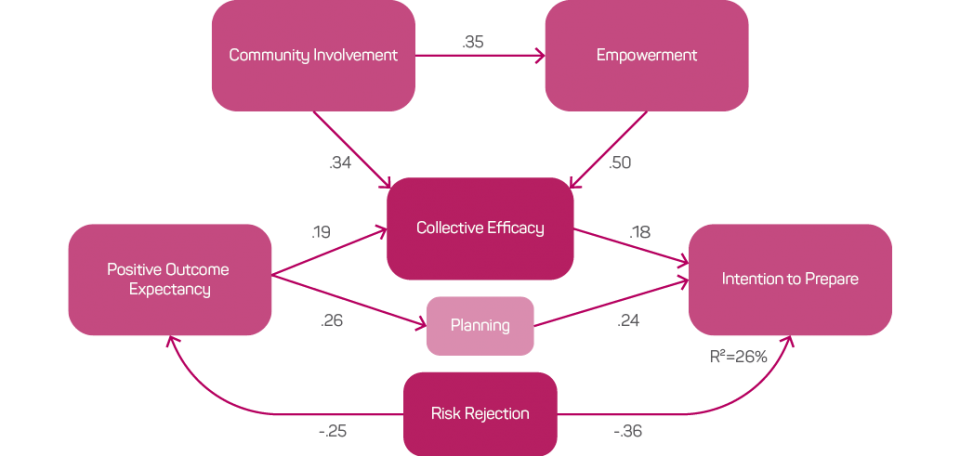
PUBLICATIONS
Published works

Community Understanding of Tsunami Risk and Warnings Systems in Australia
| Title | Community Understanding of Tsunami Risk and Warnings Systems in Australia |
| Publication Type | Journal Article |
| Year of Publication | 2017 |
| Authors | Paton, D, Johnston, D, Rossiter, K |
| Journal | Australian Journal of Emergency Management |
| Volume | 32 |
| Issue | 1 |
| Date Published | 01/2017 |
| Abstract | The Australian coastline includes 8000 km of active tectonic plate boundary capable of generating tsunamis that could impact Australia (Australian Bureau of Meteorology 2008, Attorney-General’s Department 2008, Burbidge et al. 2008, Dominey-Howes 2007). Australia has experienced over 50 recorded incidents of tsunami since European settlement (Anderson 2015). Travel times for tsunamis from the closest sources (the Puysegur Trench, south of New Zealand, and the Java Trench, south of Java) are approximately two hours. Allowing for detection and message formation, warning times of as little as 90 minutes can be anticipated. More distant sources have greater travel times and correspondingly longer warning times. Should a tsunami occur, the atrisk population is large. For example, in New South Wales, 330,000 people live at or below a height of 10 metres above sea level and within one kilometre of the coast or a coastal river (Bird & Dominey-Howes 2006). Recognition of the risk tsunamis pose for coastal communities prompted the development of the ATWS. However, to be effective, people must know about the system and be able to respond in planned and functional ways when a warning is received. It is essential that development of warning systems is complemented with activities that address the capability of people to respond promptly and appropriately when receiving a warning, particularly if warnings only give two hours for plans to be implemented. However, because warning systems have developed faster than community capability to respond to them, a need was identified to develop people’s response capability (Bird & Dominey-Howes 2006, Bird & Dominey-Howes, 2008, Dall’Osso et al. 2009, Dominey-Howes et al. 2007, Gregg et al. 2007, Johnston et al. 2005, Johnston et al. 2009, King & Gurtner 2005, Paton, Frandsen & Johnston 2010). To develop people’s capability to respond it is important to examine people’s understanding of and beliefs about tsunami and the implications for tsunami risk communication, warnings and preparedness. |
| URL | https://ajem.infoservices.com.au/items/AJEM-32-01-12 |
| Full Text |
Published Works


